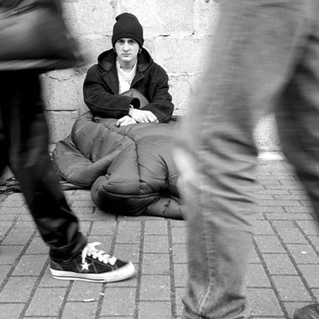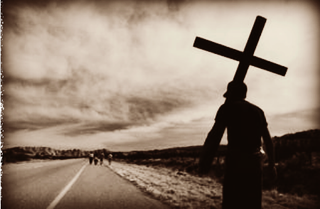Dangerous Sunday Morning Devotions: Who are “the Least” in the Kingdom of God? (Matthew 11:11)3/18/2019  In Matthew 10, the twelve are sent on a preaching tour. Jesus, then, in Matthew 11, takes to his own preaching tour. After he was approached by some of John the Baptizer’s disciples, Jesus, later, spoke to the crowds (v. 7a), asking them, “what did you go out to see when John the Baptizer was preaching in the wilderness outside the cities of Israel” (vv. 7b-9)? Jesus tells them that John was the “greatest of all born of women” (v. 11a), which I take to mean John as a prophet was the hinge of redemptive history, the final prophet, who pointed directly to, introducing the Messiah-king long promised (vv. 10, 13-14). But then, Jesus adds: “Yet, the one who is least [mikros] in the kingdom of heaven is greater than John” (v. 11b). These are strange words, actually, provoking the question, who are “the least” here in Jesus’ statement? In a NT way of thinking, there are no “leasts” in the kingdom, for (hasn’t) that has been the problem throughout church history and, sadly, today, where the church has instituted hierarchies patterned after the world (or power) and social environments (and class) where there are “leasts” and “nonleasts.” You know, to use other NT language, “lasts” and “firsts.” So, what does Jesus mean here by “least in the kingdom”? Who are these “leasts”?
Nonetheless, we do have a contextual marker for the “least” right here in the text, within Jesus’ own teaching and Matthew’s narrative context. So, I’d say, this is the first place, the narrative itself, and probably the only appropriate place, to discover who the “least” in the kingdom are whom Jesus is referring—and then, read the text for appropriate significance and application. Just prior to this John the Baptizer' disciples interchange, Jesus tells us who “the least” are: they are the blind who receive their sight, the lame who walk, the lepers who are cleansed, the deaf who hear, the dead who are raised up, and the poor who have good news preached to them (11:5). This list is not “everyone” (though we preach, teach, and reword the plain, clear reading to fit our affluent, non-poor, privileged spheres) to make it mean "everyone." This is further affirmed by the terms used to charge Jesus at the end of the narrative unit: Jesus eats supper with (i.e., is a “glutton and a drunkard”) and is “a friend of tax collectors and sinners” (v. 9). These are “the least” because they are (without reading into the narrative) “the least” socially and religiously.* Besides, elsewhere “the least” are identified as real and particular: “little ones” (same word as “least,” mikros) receive a cup of water from a disciple (Mt 10:42); people are warned not to cause “little ones” (again, same word) to stumble, which are easily understood as “children” (18:6; cf. vv. 10, 14; Luke 9:48; 12:32; also, Hebrews 8:11; Revelation 13:16, where poor and small/least are parallel). When the disciples asked Jesus “who is the greatest in the kingdom” (18:1b), he pulls a child before them and teaches that unless we (the crowd and the disciples) “become like a child” we cannot enter the kingdom (18:2-3). Later he calls the child a “little one” (again, the word for “least”)—thus, a child is “least” (v. 6). This makes sense in that a child in the Greco-Roman world was considered only partially human (i.e., not a full person), that is one of “the least.” So, Jesus teaches, only if one who humbles oneself to be like a child** (i.e., a “least”) could be “greatest in the kingdom of heaven” (18:3-4) This is the same pattern found in the Jesus-John-the-Baptizer teaching in Matthew 11: The “least in the kingdom of heaven” is “greater” than John the Baptist (11:11).
As the first will be last and the last first (Matthew 19:30; 20:16), so the least among us—the bottom populations, the bottom demographics—are greater in the kingdom of heaven than John the Baptizer. This does not subtract from the affluent, privileged, and powerful (i.e., the first) discovering Jesus; for, as they become like children, helpless and needy and recognizing their privilege is counter to the kingdom of God, they, too, may enter the kingdom of God and, thus, learn how divest their power and over-abundance (i.e., become last). Recognizing that “the least” does not ignore the nonleasts in our social structures, but helps them—as well as church leaders and churches (that are in danger of having leasts and nonleasts in their own ecclesiastical structures—to align with, what seems to be, the priorities stressed by Jesus in his teaching regarding the Kingdom of Heaven. *Please read “sinners” as it is indented: again, not as “we are all sinners,” but as those who our outcasts, uneducated, the poor, the ceremonially unclean, the non-religious-elite, et al. So, sinners here are specific, not just anyone. More like our “people on the other side of the railroad tracks,” “the people in that house,” “on that street,” “in that neighborhood,” “in that section of town,” the less-people, the unclean, unstable, not-like-us, not-our-kind, et al. **Don’t lower this to mean, to be child-like, i.e., we need to be child-like. Being “like a child” in the Greco-Roman world was one of the most dangerous places to be. Our modern concern for the welfare of children has no equivalent in the NT world. Affirming the dignity of children was socially counter-cultural, for children were universally “displayed as negative symbols or paradigms” and were “ill-suited portraits for adults.” The preservation of the Roman family estate was the social and civic priority, not the protection and prosperity of the child. A child’s life was cheap. Children could face sexual exploitation by adult males, forced into heavy labor, or subject to maltreatment by tutors. The despicable ancient practice known as exposure, the abandonment of unwanted infants, is illustrative of the social mapping of Jesus’ day.
0 Comments
 Let’s reconsider two Biblical thoughts from our favorite-to-quote-bucket–“take up your cross” and “Whoever finds his life will lose it, and whoever loses his life for my sake will find it” (Matthew 10:38-39)–and see if we can save them from the pile of Christian clichés. We should pay closer attention to the narrative context as we read the text from which these two are found, before we make application: that is, hearing the significance, then making application. Taking up one’s cross is often used devotionally to move Christians toward obedience; and, losing-finding one’s life is often used toward the nonChristian to draw them to Christ. Not bad things (or outcomes), but rather than a general (privatized) application of these–which, by the way, these are toward Christians for faithful perseverance and endurance in the faith, which is the context, e.g., “. . . the one who endures to the end will be saved,” 10:22b–and, thus, a more specific application is warranted. First, the context is specific:
The immediate paragraph context is the strain and conflict between believing and unbelieving household members. Household conflict in general would have threatened heir legitimacy (the reason for the household in the first place in Greco-Roman culture and social construct, to produce and protect a legitimate male-citizen heir), the passing on of wealth and family social standing, and would have put at risk one’s survival . . . so literally one “saves” one’s life through the family/household and “loses” one’s life apart from family (that is, a household under a patriarch, male-head-of-household). This was the Greco-Roman way (in the time of New Testament). This makes better since of Jesus’ words: “Whoever finds his life will lose it, and whoever loses his life for my sake will find it” (Matthew 10:39). Thus, taking up one’s cross (v. 38a) is related to what happens when following Jesus puts one, “for Jesus’ sake” (v. 39b), in a place where one can no longer count on the social construct available for life (literally for survival). So, the significance of this text and these “clichés” is, following Jesus (which this text is about; v. 38b) means to die to (i.e., no longer count on or trust) the ways in which our social constructs and cultural norms provide identity, security, and worth. The Christian’s identity, security, and worth is located in Jesus and in his cross, which, then, sets animosity, alienation, and, potential, hostility in within the world (i.e., society and cultural and institutional place) that currently gives one identity. This is truly Christian discipleship, that is, following after Jesus. This is losing one’s life (i.e., giving up, abandoning, rejecting, not trusting in such social norms--again--for identity, security, and worth) to find real, true life through following Jesus. The question would, then, be what social constructs and cultural norms give us (give you) identity, security, and worth? These we need to die to in order to have real, true life. This is what it means to actually follow Jesus.
|
AuthorChip M. Anderson, advocate for biblical social action; pastor of an urban church plant in the Hill neighborhood of New Haven, CT; husband, father, author, former Greek & NT professor; and, 19 years involved with social action. Archives
February 2024
Categories
All
|
Pages |
More Pages |
|
 RSS Feed
RSS Feed